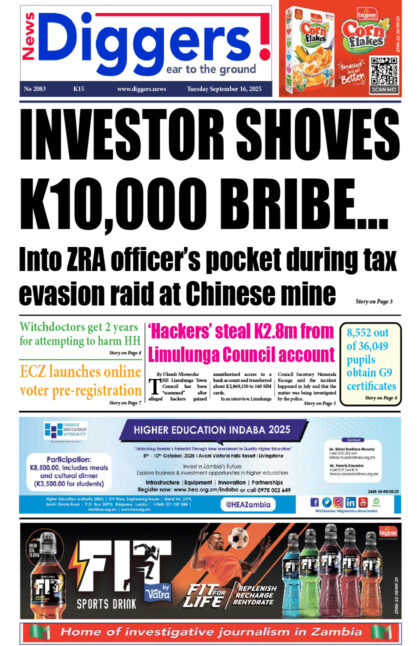Zambia’s gross international reserves have continued to drop to below US $1.5 billion, a historic 10-year low, triggered by government’s huge external debt servicing commitments, Ministry of Finance data reveals.
But Finance Minister Margaret Mwanakatwe says government remains committed to building up the dwindling reserves through implementation of measures, such as payment of mineral royalty in US dollars.
Speaking during an update on economic developments in Lusaka, Friday, Mwanakatwe revealed that Zambia’s reserves by the end of February, this year, dropped to a 10-year low of US $1.43 billion, representing just 1.6 months of import cover from US $1.56 billion, or 1.8 months of import cover, by the end of last year, triggered by government’s continued external debt servicing.
The constant dwindling in the country’s reserves follows sustained drops from US $1.63 billion as at September 30, 2018, representing 1.9 months of import cover, from a high of around US $3.1 billion in 2014.
International reserves are any kind of reserve funds, which central banks can pass among themselves, internationally, and they remain an acceptable form of payment among these banks.
Reserves themselves can either be gold or a specific currency, such as the dollar or euro.
The current reserves position is around US $500 million less than the 2009 position where the country had US $1.9 billion in December of that year.
Mwanakatwe, however, told stakeholders gathered at Intercontinental Hotel that government remained committed to building up the dwindling reserves through implementation of measures, such as payment of mineral royalty in US dollars.
“The reserves position as at end February, 2019, was US $1.43 billion (1.6 months of import cover) from US $1.56 million (1.8 months of import cover) at end December, 2018. This was despite payment of external debt service amounting to US $440 million over the period. Government remains committed to building up reserves through implementation of measures, such as payment of mineral royalty in US dollars and buying of foreign exchange from the market by the Bank of Zambia,” Mwanakatwe said.
“A further strategy towards reserve accumulation is purchase of foreign exchange from the market for payment of smaller debt service obligations and other government procurements. Reserves are utilized mostly on much larger payments. Government is also working on a mechanism to facilitate payment of debt obligations to China using the Chinese Renminbi, and holdings of gold as reserves. We are heading towards the business end of implementing these measures.”
And she announced that Zambia’s external debt marginally increased to US $10.178 billion during the first quarter of this year from US $10.05 billion by the end of last year.
Meanwhile, Mwanakatwe explained that government would only dismantle the domestic arrears owed to suppliers and contractors over the medium-term period owing to the huge build-up to K15.6 billion.
“In view of the magnitude of the amount, the arrears can only be dismantled over the medium-term. Depending on the amounts involved, some of the arrears will be quickly paid off, with a focus on local suppliers so as to reduce high non-performing loans, improve liquidity for our suppliers and thereby induce economic activity,” said Mwanakatwe.
























